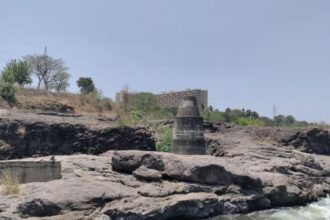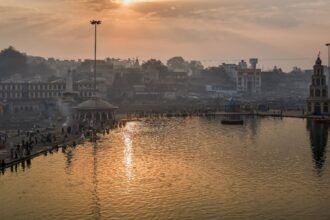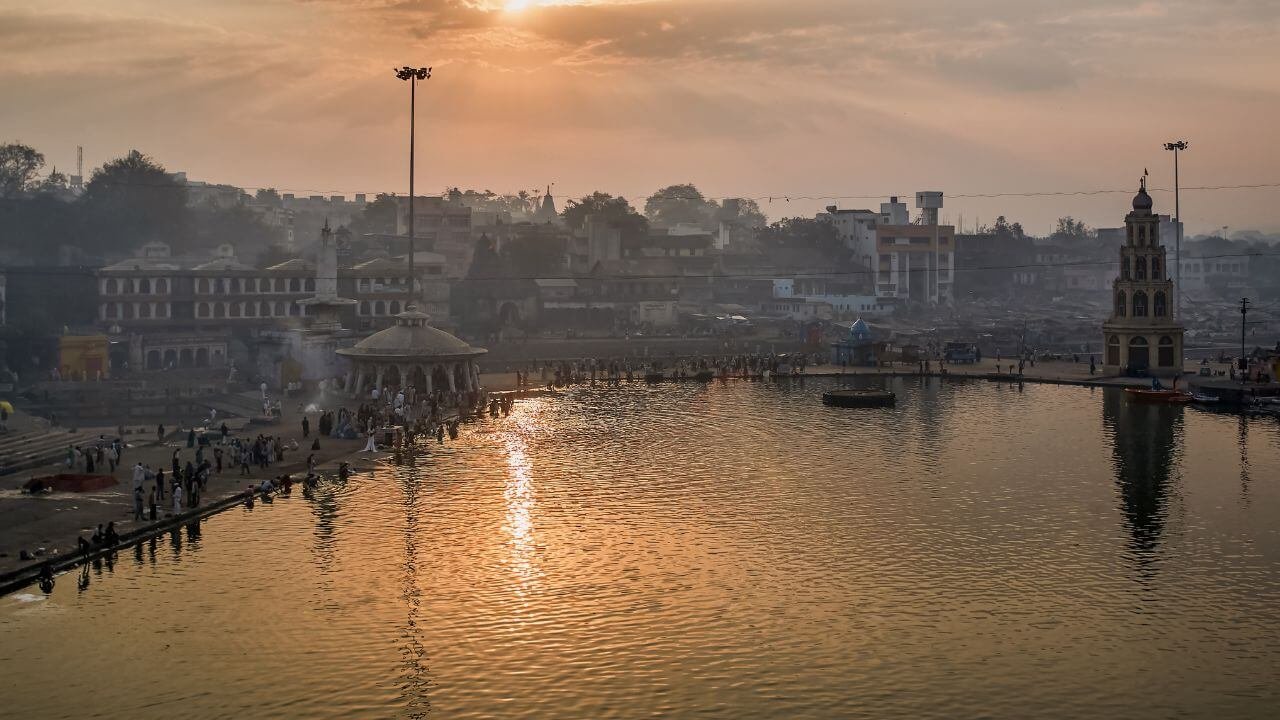The Kumbh Mela, one of the world’s greatest religious gatherings, takes place in Nashik every 12 years. The Godavari Kumbh River, known as the “Ganga of the South,” is a central part of this grand celebration. It is more than just a river; it is a divine thread that ties together faith, mythology, rituals, and freedom. What makes the Godavari Kumbh River so special during the Kumbh Mela? Let’s get deep into its spiritual side.
Godavari in Hindu mythology
The story of Samudra Manthan, in which the Devas (gods) and Asuras (demons) churn the ocean to obtain the nectar of immortality, or Amrit, is the origin of the Kumbh Mela. During this cosmic event, Lord Vishnu, in his Mohini form, flew away with the Amrit to keep it safe from the demons. During the chase that followed, a few drips of the nectar fell in Prayagraj, Haridwar, Ujjain, and Nashik.
People in Nashik think that the Kumbh (pot) was spilt near the banks of the Godavari Kumbh River, at a spot called Kushavarta Kund. This mythological link made the Godavari divine, and thus, people who plunge into its waters during the Kumbh are thought to be free from the cycle of birth and death.
The Geographic and Spiritual Significance of Godavari
The Godavari is the second-longest river in India. It starts in the Brahmagiri Hills at Trimbakeshwar, which is near Nashik. It goes through Maharashtra, Telangana, Andhra Pradesh, and other states for more than 1,400 km before joining the Bay of Bengal. Its physical area is huge, but its spiritual importance is strongest in Trimbak and Nashik, where people see it as a living goddess.
The Kushavarta Ghat is the main place to bathe during the Kumbh Mela. Sadhus, saints, and millions of devotees come here to take a dip in the holy waters, which they believe will wash away their sins and boost their spirits.
Kushavarta Kund: The Heart of the Godavari Kumbh Rituals
The Kushavarta Kund, a tiered bathing tank near the Trimbakeshwar Temple, is the most holy place on the Godavari for Kumbh ceremonies. This kund is said to be where the Amrit kissed the ground, and it is also where sages like Gautama did penance. During the Kumbh Mela, taking a holy dip in this kund is thought to be one of the best things a Hindu can do in their life.
Also read : Eco Kumbh Mela 2027: Zero-Waste Plans & Green Pilgrimage
Shahi Snan and the Power of Ritual Baths
The Kumbh celebrations centre around the Shahi Snan, or Royal Bath. On certain important astrological dates, different Akharas (religious groups of sadhus) take a ceremonial dip in the river in a big procession, and then the entire population does the same.
People believe that bathing in the Godavari Kumbh river on these days not only cleanses away sins but also helps them grow spiritually and set them free. These times are quite strong to see and feel. Flags fly high, chants echo, conch shells blast, and the river turns into a sea of saffron robes and devotion.
A Spiritual Sanctuary on the Banks
During the Kumbh Mela, the banks of the Godavari River turn into a colourful but tranquil spiritual haven. People who worship meditate under peepal trees, say mantras, and listen to talks by wise saints and gurus. There is a powerful and healing energy in the air when thousands of spiritual seekers are there.
Temples like Trimbakeshwar Jyotirlinga, which is one of the 12 most revered Shiva temples in India, make the river even more spiritually important. To finish their spiritual trip, pilgrims often take a bath in the river and then go to this temple for darshan.
Environmental Consciousness and River Conservation
People have become more aware of how important it is to keep the Godavari holy during the Kumbh in recent years. Government and non-governmental organisations (NGOs) have started projects for:
- Plastic-free zones
- Bio-toilets
- Dedicated waste collection teams
- Riverbank cleanliness drives
- Spiritual environmental awareness programs
Pilgrims are encouraged to show gratitude to the river not just through ritual but also through responsible behaviour, ensuring that faith and sustainability go hand in hand.
Cultural Activities Along the Godavari
The river isn’t simply a place to bathe and do rituals; during the Mela, it turns into a cultural centre. Local artists do folk dances, music performances happen on floating stages, and art pieces tell stories from Hindu scriptures. These events make the experience better for both tourists and pilgrims by making it more welcoming and immersive.
Final Thoughts
The Godavari Kumbh River is more than just a place; it is a spiritual being that links the earth to the universe. For millions of followers, it’s not just water; it’s liquid divinity that brings salvation, healing, and freedom. Whether you go to Nashik Kumbh Mela 2027 for religious reasons or just to learn more about the culture, spending time by the Godavari will stay with you forever.
Take the plunge – literally and spiritually – and feel the eternal rhythm of devotion that flows with the Godavari.






